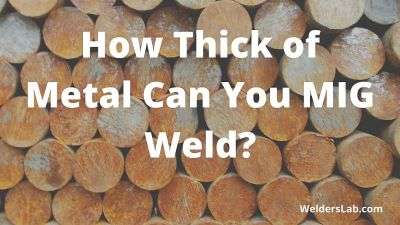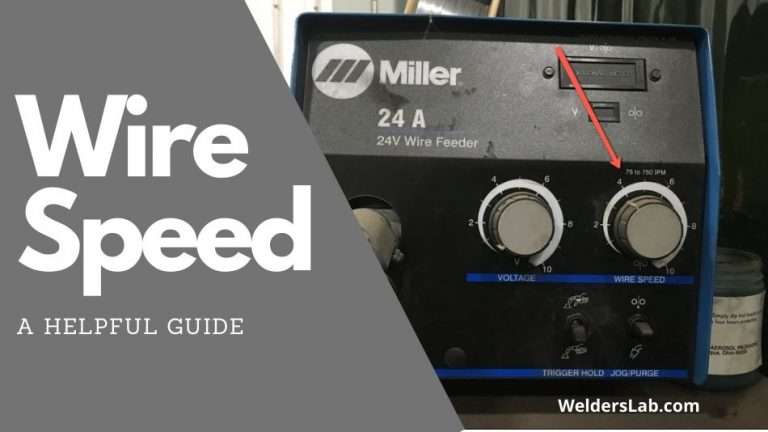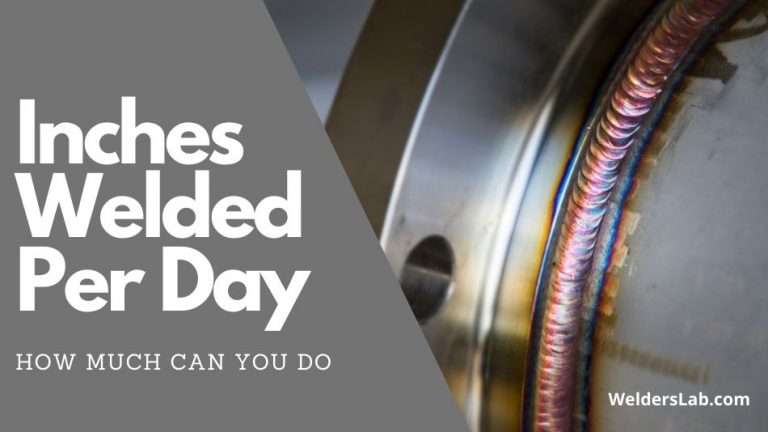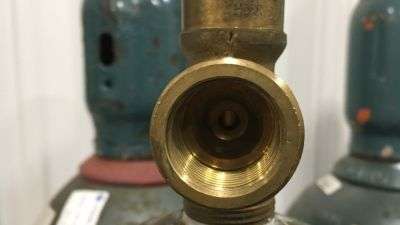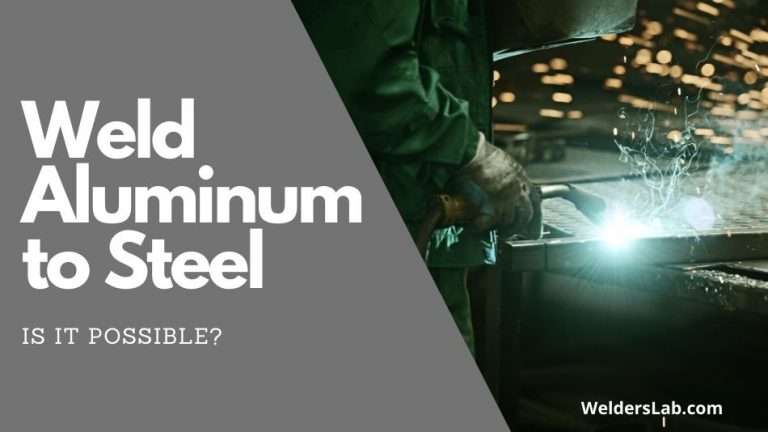Can You Weld Over Painted Metal?
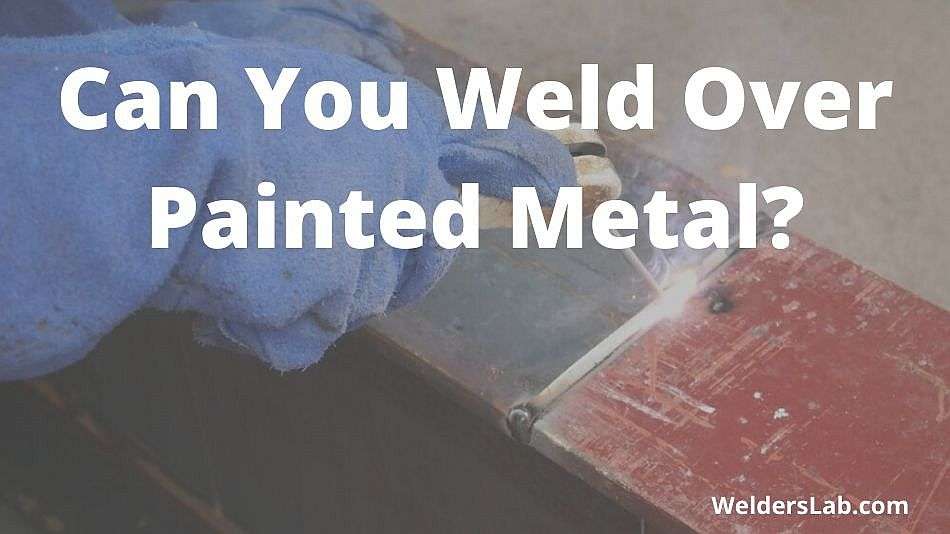
Oh, boy, that’s a really great-looking paint job! The problem is, I now have to weld that beautiful piece. The painted layers just won’t do, or will it? There are a lot of variables in welding, including a lot of processes to be familiar with.
So can you weld over painted metal? Yes, it is possible to weld over painted metal but as you weld, it will have to burn off the thin layer of paint first before it can penetrate the base metal. The paint may also cause the weld not to arc to the metal and you may need to be ground off in a spot for your ground clamp and where you plan to start your bead. For the best results remove the paint completely from the surface before you start.
While there ARE some circumstances where you can successfully weld over paint, there are a lot more circumstances that say not to. Additionally, if you are going to weld over paint, you should know the proper precautions to ensure your safety and the best outcome of your welding job as well.
In this guide, we will discuss whether or not you can weld over painted metal as well as how doing so may affect the job at hand. We will cover what to expect when working with a painted surface and just what happens when you weld a painted surface.
Keep reading to learn everything you should know about welding with painted surfaces.
Can You Weld Over Painted Metal? What You Need to Know
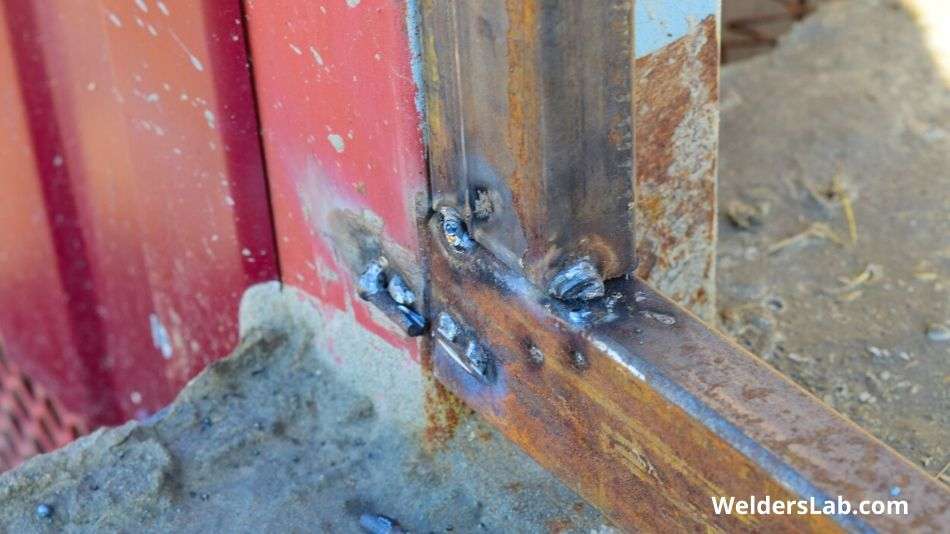
My initial answer to this question is you should really not weld over painted metal.
There are some exceptions to the rule but as a general practice, you should plan to remove the paint before you begin welding.
There are several reasons for this but ultimately, it will affect your welding job if you leave the paint intact.
Can You Weld Over Paint?
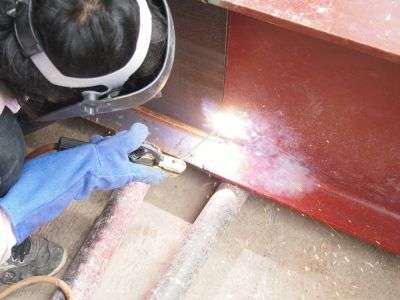
Long story short, if you’re going to weld over paint then you need to take appropriate cautions. It actually makes your work more challenging.
You will need to strike an arc by grinding off at least some portion of the pain. You will then place your ground clamp on the metal before proceeding.
Honestly, if you’re going to go to that trouble, you might as well plan on just removing the paint and cleaning the surface. You would be far better off using an angle grinder and grinding away all of the paint to have a grounded surface.
Your surface will be clean and prepared and you will have a ground, whereas leaving paint on the surface can cause an issue for the ground.
No matter what you do here, don’t skip cleaning your surface. The product of your weld and whether or not it’s able to penetrate the metal rely on your surface being clean.
Here’s one more thing to note as you make your decision to weld or not weld over that paint.
Welding over paint emits toxic fumes into the air. These fumes will directly affect you but could potentially affect others too. If you choose to weld over paint, be sure to use a respirator.
What Happens When You Weld Over Paint?
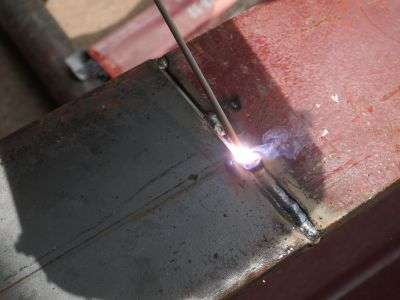
You decided that just this once you’re going to go ahead and weld over the paint. You simply didn’t want to mess with removing it this time.
There are certainly welding rods that will absolutely penetrate the paint and give you a good stick. Sometimes these are effective and sometimes you just think they are effective.
When you weld over paint, it’s much like welding over rust or oil and grease that you failed to clean from your surface. You shouldn’t do it. Absolutely anything coating your surface could affect the integrity of your weld.
You wouldn’t leave oil or grease on your surface. You wouldn’t leave rust or abrasive residues on your surface, so why then would you leave paint on your surface?
In my opinion, if you’re cleaning your surface as you should be then you should also be removing the paint from your surface. It’s simply part of that prep process that you really shouldn’t skip for the best results.
When you weld over paint, the heat of the weld actually causes the paint to burn. This, in turn, produces a toxic effect thanks to the burning of paint fumes in the air.
Side Note: You definitely don’t want to breathe in burnt paint fumes. Those fumes are hazardous to consume. You will probably also notice excessive smoke from the burning paint.
For all appearance purposes, it can look like you are burning off the paint as you work.
When you’re welding, the arc can look like the paint is burning before you actually get to that spot but what is really happening is it’s becoming gaseous and those gases can work their way into your weld.
This means that gases from the paint as well as potentially paint splatters, carbon, or other types of residue, are working their way into your weld.
We all know that is the last thing you want because even though you might not be able to see the culprits, it means your weld might not be as great as you want it to be – or as it should be.
Ultimately, welding over paint could cause your weld not to penetrate as needed. This means there are more likely to be impurities and imperfections in your weld.
For the best quality weld results, you should remove the paint. You certainly don’t want your unwillingness to follow the steps to cause your welding job to be shoddy.
That reflects poorly on you in the end.
Removing Paint to Weld

If you want your welding job to turn out with a high-quality finish, then just remove the paint before you weld.
You can do a couple of different things to remove the paint. You can always start by using a paint stripper. Additionally, you can use tools like grinders, buffing wheels, and wire wheels to help rid the surface of the paint.
If you use a paint-stripping chemical, just be mindful of how that chemical may react when you weld. You certainly don’t want to subject yourself to a different form of noxious fumes.
Your best bet is to use a paint stripper-type tool and using a wire wheel is typically the best recommendation.
If you use a wire wheel or a grinder, or any other type of tool just be sure to also follow proper safety protocols to protect yourself during the process.
Once you’ve removed the paint, you should clean your surface as needed to remove any residue before you start welding.
Frequently Asked Questions
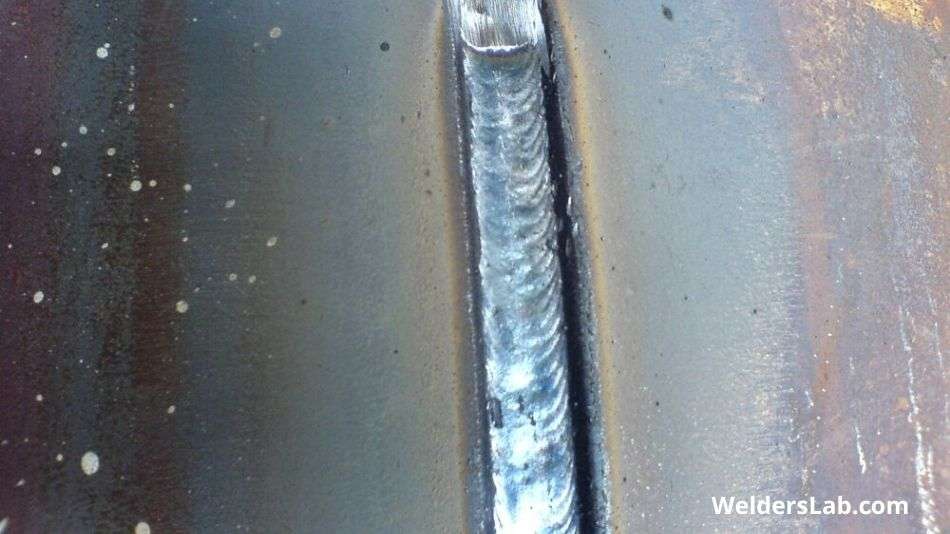
Can You Weld Over Powder Coat?
Powder coating and welding really don’t go together, much like any other type of coating or residue.
Welding will actually destroy the powder coating in the direct weld area and in the surrounding area.
A lot of the products we make get powder coated at my weld shop and to me, it almost produces a harsher toxic fume than paint. Again you’ll want to avoid the fumes in all cases.
Quick Tip: One way to do this is to run a small fan on to the side to help direct the fumes away from you. You don’t want to put it directly on the weld as this will push the shielding gas off of your weld.
Ultimately, the powder coating should be removed, it can always be reapplied after welding if necessary.
This is just another residue that could potentially have an impact on your welding.
Can You Weld Over Galvanized?
Galvanized is not your typical coating. Galvanized metals can actually be welded without removing the coating.
The thing to understand is that the galvanization process typically is a zinc coating so you may need to adjust your welding process to work with the materials of the galvanized coating.
The galvanized coating will burn away at the weld location and in the surrounding areas as well.
Be sure to wear proper PPE when working with galvanized metals.
Can You Weld Over Chrome?
Chrome is basically a type of finish. What you will find is that the best practice is to remove any type of finish before welding.
Chrome is highly toxic so your best bet is to strip the chrome finish off. If you choose to weld through chrome, be sure to protect yourself accordingly.
We recommend that you grind down to the steel underneath the chrome rather than trying to weld over or through the chrome.
Conclusion
If you haven’t quite figured it out by now, I think it’s safe for me to say that the best thing you can do for any welding job is to work with a clear and uncontaminated surface.
There are consequences to ignoring or avoiding rules, guidelines, and recommendations when it comes to welding. Welding over painted metal is simply not a good idea.
Ultimately, the choice is up to you but with the information you have here and the knowledge of the potential repercussion, why risk it?
It takes only a little time and effort to remove the paint and set your welding job up for success. This protects you and the job all at the same time.


